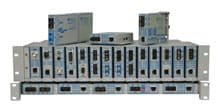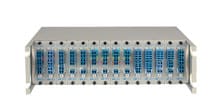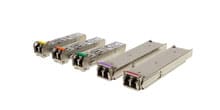- Products
- PoE Media Converters and Switches
- Ethernet & PoE Switches Product Selector
- Multi-Gigabit Ethernet and PoE Switches
- PoE PSE Commercial Switches
- PoE PSE Industrial Fiber Switches
- PoE Industrial Copper Extenders
- PoE Powered Media Converters
- PoE PSE Media Converters
- PoE Extenders & Injectors Product Selector
- Pluggable Transceivers Product Selector
- Single Pair PoE Products
- Product Lines
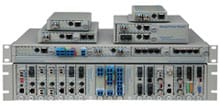
- iConverter Managed Multi-service Platform
- Copper to Fiber Media Converters
- Ethernet Media Converters
- 10 Gigabit Copper-to-Fiber
- 10/100/1000 Copper to 10 Gigabit Fiber
- 10/100/1000 Copper-to-Fiber with Integrated Management
- 10/100/1000 Industrial Copper-to-Fiber with Integrated Management
- 10/100/1000 Copper-to-Fiber with VLAN
- 10/100/1000 Dual Media Converter with VLAN
- Gigabit Copper-to-Fiber
- 10/100 Copper-to-Fiber with Integrated Management
- 10/100 Industrial Copper-to-Fiber with Integrated Management
- 10/100 Copper-to-Fiber with VLAN
- 10/100 Copper-to-Fiber
- Fast Ethernet Copper-to-Fiber
- Fast Ethernet Redundant Links
- 10Mbps Copper-to-Fiber
- 10Mbps Copper to Coax
- TDM Media Converters
- Serial Media Converters
- Ethernet Media Converters
- Fiber to Fiber Media Converters
- 10 Gigabit Fiber-to-Fiber Converter and Transponder
- 10 Gigabit Industrial Converter and Transponder
- SFP-to-SFP Fiber Converter and Transponder
- SFP-to-SFP Industrial Fiber Converter and Transponder
- Gigabit Fiber to-Fiber with 3 Rs
- 100/1000 Fiber-to-Fiber with 3 Rs
- Gigabit Fiber-to-Fiber
- Fast Ethernet Fiber-to-Fiber with 3 Rs
- Fast Ethernet Fiber-to-Fiber
- OC-3/STM-1 Fiber-to-Fiber
- OC-12/STM-4 Fiber-to-Fiber
- Carrier Ethernet Network Interface Devices
- CE 2.0 - 10G Demarcation NID
- CE 2.0 - 10/100/1000 Mult-port NID
- CE 2.0 - 10/100/1000 Mult-port NID with PoE
- CE 2.0 - 10/100/1000 8-Port NID
- CE 1.0 Service OAM - 10/100/1000 NID
- CE 1.0 Link OAM - 10/100/1000 Copper-to-Fiber NID
- CE 1.0 Link OAM - 10/100 Copper-to-Fiber NID
- CE 1.0 Link OAM - Gigabit Fiber-to-Fiber NID
- CE 1.0 Link OAM - Fast Ethernet Fiber-to-Fiber NID
- CWDM Multiplexers
- T1/E1 Multiplexers
- Ethernet Switch Modules
- Management System
- Chassis Options

- 1-Module Industrial Chassis
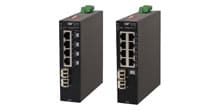
- RuggedNet Industrial Switches and Extenders
- Industrial PoE PSE Fiber Switches
- Multi-Gigabit Managed Industrial PoE+/BT Switches
- Multi-Gigabit Unmanaged Industrial PoE+/BT Switches
- 10G Managed 802.3bt PoE Switches
- 10G Unmanaged 802.3bt PoE Switches
- 10G Managed PoE+ Switches
- 10G Unmanaged PoE+ Switches
- 1G Managed PoE+ Switches
- 1G Unmanaged PoE+ Switches
- 1G Unmanaged 802.3bt PoE Switches
- 1G Managed 802.3bt PoE Switches
- Industrial SPE Switches
- Industrial Ethernet Switches
- Industrial PoE Copper Extenders
- Industrial Power Supplies

- OmniConverter Media Converter, Switches and Extenders
- PoE PSE Media Converters
- 10G Multi-Gigabit / Multi-Rate PoE Media Converter
- 10G Multi-Gigabit / Multi-Rate Media Converter
- 10/100 Multi-port PoE+ Media Converter
- 10/100 PoE+ Media Converter
- 10/100/1000 Multi-Port PoE+ Media Converter
- Industrial 10/100/1000 Multi-Port PoE+ Media Converter
- 10/100/1000 PoE+ Media Converter
- 10/100/1000 PoE++ 60W-100W Media Converter
- Industrial 10/100 Multi-port PoE+ Media Converter
- 1U Rack-Mount Shelf
- PoE PSE Compact Switches
- Multi-Gigabit Managed PoE+/BT Switches
- Multi-Gigabit Unmanaged PoE+/BT Switches
- 10G Managed 802.3bt PoE Switches
- 10G Unmanaged 802.3bt PoE Switches
- 10G Managed PoE+ Switches
- 10G Unmanaged PoE+ Switches
- 1G Managed PoE+ Switches
- 1G Unmanaged PoE+ Switches
- 1G Managed 802.3bt PoE Switches
- 1G Unmanaged 802.3bt PoE Switches
- Ethernet Switches
- Single Pair Ethernet (SPE)
- PoE Copper Extenders
- PoE Injectors
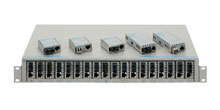
- miConverter Unmanaged Miniature Media Converters
- 10/100/1000 Copper-to-Fiber
- Industrial 10/100/1000 Copper-to-Fiber
- 10/100/1000 Ultra-Compact Copper-to-Fiber
- Gigabit Copper-to-Fiber
- 10/100/1000 Copper-to-Fiber PoE Powered
- 10/100 Copper-to-Fiber
- 10/100 Ultra-Compact Copper-to-Fiber
- 10/100 Copper-to-Fiber PoE Powered
- 18-Module Chassis
- Industrial 10/100 Copper-to-Fiber PoE Powered
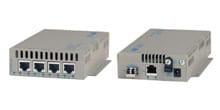
- FlexSwitch Compact Switches
- Solutions
- Company
- Support
- How to Buy
The Role of Single Pair Ethernet in Modern Industrial Networks

As industrial networks evolve to support increasingly complex and data-driven applications, Single Pair Ethernet is emerging as a transformative technology. Designed to simplify connectivity while maintaining high performance, Single Pair Ethernet is becoming a preferred solution for modern industrial environments. In this article, Omnitron Systems explores what is Single Pair Ethernet, how it works, its standards, and its growing role in industrial networks.
Understanding Single Pair Ethernet: What Is Single Pair Ethernet?
Single Pair Ethernet (SPE) is an Ethernet physical layer standard that uses only one twisted pair of copper wires for data transmission and power delivery. Unlike traditional Ethernet, which typically relies on four twisted pairs (eight wires), Single Pair Ethernet operates with just two wires, dramatically simplifying cable design.
The Single Pair Ethernet standard—defined in IEEE 802.3cg and ISO/IEC 11801-991—enables data transmission speeds from 10 Mbps to 1 Gbps over cable lengths up to 1000 meters. This long reach makes SPE particularly suitable for industrial automation and control systems.
How Does Single Pair Ethernet Work?
The technology behind SPE involves sending Ethernet signals over a single twisted pair cable while supporting simultaneous power transmission. This capability reduces the need for separate power cabling, thereby lowering installation complexity and costs.
The Single Pair Ethernet cable is thinner and lighter than conventional Ethernet cables, allowing easier routing in confined industrial spaces. With enhanced shielding and ruggedized connectors, it withstands electromagnetic interference and harsh industrial conditions.
Single Pair Ethernet vs Ethernet: Key Differences
When comparing Single Pair Ethernet vs Ethernet, the primary distinctions lie in cable complexity, distance, and power delivery:
- Traditional Ethernet uses four pairs of wires, is limited to 100 meters in cable length without repeaters, and requires separate power infrastructure.
- SPE reduces cabling to a single pair, supports cable lengths up to 1000 meters, and integrates power delivery through Single Pair Power over Ethernet (SPoE) / Power over Data Line (PoDL).
This comparison highlights why SPE is particularly suited for industrial Single Pair Ethernet applications, where long cable runs and simplified wiring are critical.
| Feature | Single Pair Ethernet (SPE) | Traditional Ethernet |
|---|---|---|
|
Number of Wire Pairs |
1 twisted pair (2 wires) |
4 twisted pairs (8 wires) |
|
Maximum Cable Length |
Up to 1000 meters |
Typically 100 meters |
|
Data Transmission Speeds |
10 Mbps to 1 Gbps |
10 Mbps to 10 Gbps+ |
|
Power Delivery |
Power over Data Line (PoDL) supported |
Power over Ethernet (PoE), requires more wires |
|
Cable Diameter and Weight |
Thinner, lighter cables |
Thicker, heavier cables |
|
Installation Complexity |
Simplified cabling, easier routing |
More complex, bulkier cabling |
|
Electromagnetic Interference |
Enhanced shielding for industrial noise resistance |
Standard shielding; more susceptible to EMI |
|
Typical Use Cases |
Industrial automation, smart sensors, IIoT |
Office networks, data centers, industrial backbone |
![]()
Industrial Single Pair Ethernet: Applications and Use Cases
Industrial Single Pair Ethernet is becoming a cornerstone technology in many sectors because it offers a unique blend of long-distance data transmission, simplified cabling, and simultaneous power delivery. This combination makes it especially valuable in complex industrial environments where efficiency and reliability are paramount.
Single Pair Ethernet Applications in Automation
In modern automated manufacturing, factories rely heavily on a vast network of sensors, actuators, and controllers that communicate constantly to regulate processes, ensure quality, and maximize throughput.
- Sensors detect everything from temperature and pressure to motion and proximity.
- Actuators execute commands to move parts, control valves, or adjust machinery.
- Controllers like PLCs (Programmable Logic Controllers) orchestrate operations based on sensor inputs and production algorithms.
Here, Single Pair Ethernet shines because its long cable reach (up to 1000 meters) means devices distributed throughout large factory floors can connect directly without complex intermediate devices or repeaters. This reduces installation time and cost.
Moreover, the Power over Data Line (PoDL) feature of SPE means the same single pair cable can deliver power to these devices, removing the need for separate power wiring and simplifying maintenance. The thinner, more flexible Single Pair Ethernet cable also fits neatly into crowded industrial spaces, improving cable management and reducing physical strain on installation personnel.
Read more: SPoE vs PoDL: Definitions, Differences, and Applications
Industrial Single Pair Ethernet in Smart Infrastructure
Beyond the factory floor, industrial Single Pair Ethernet plays a pivotal role in the smart infrastructure space—especially in smart grids, utilities, and transportation systems.
- Smart Grids require continuous monitoring and control of electrical distribution to optimize energy flow, detect faults, and reduce downtime.
- Utilities like water and gas benefit from remote monitoring systems that provide real-time data on flow rates, pressure, and usage.
- Transportation systems such as intelligent traffic lights, toll systems, and vehicle-to-infrastructure communications demand reliable and fast data links over long distances.
SPE enables robust, long-range communication between these widely dispersed devices and central control units. Its ability to provide both data and power through a single cable lowers installation complexity and costs—critical for infrastructure projects that span large geographical areas.
Single Pair Ethernet Converter and Switch Solutions
Most industrial networks currently use traditional Ethernet standards, meaning that introducing SPE often requires bridging technologies to ensure compatibility and network integrity.
- A Single Pair Ethernet Converter acts as a bridge by converting the SPE signal (which uses a single twisted pair) to standard Ethernet signals that run on four-pair cables. This enables legacy equipment and newer SPE-enabled devices to coexist seamlessly.
- A Single Pair Ethernet Switch is a network device designed specifically to manage SPE traffic. It routes data between devices connected via SPE and integrates them with the broader Ethernet network. These switches often support multiple SPE ports and can handle higher-layer functions such as traffic prioritization, diagnostics, and network security.
Together, these devices make it possible for companies to modernize their industrial networks incrementally. They can adopt SPE where it makes the most sense—such as on long cable runs or new sensor installations—while still using existing Ethernet infrastructure elsewhere, protecting prior investments.
Read more: Top 5 Use Cases of Single Pair Ethernet in Industrial Applications

Advantages of Industrial Single Pair Ethernet
Simplified Network Architecture
Using a Single Pair Ethernet switch reduces cabling bulk and cost, making networks easier to install and maintain.
Enhanced Network Reliability
The durable Single Pair Ethernet cable and connectors provide resilience against industrial noise and mechanical stress, ensuring stable connectivity.
Support for Industry 4.0
By enabling high-speed, long-distance data transmission, SPE supports Single Pair Ethernet industrial partner network initiatives aimed at smart factory and IIoT deployments.
Single Pair Ethernet Standards and Compliance
Standards play a vital role in technology adoption, especially in industrial networking, where devices from different manufacturers need to work seamlessly together. For Single Pair Ethernet (SPE), adherence to established standards ensures that components such as cables, connectors, switches, and converters are interoperable and deliver consistent performance.
IEEE 802.3cg: The Foundation for SPE Physical Layer
The IEEE 802.3cg standard is a cornerstone in defining how Single Pair Ethernet operates at the physical layer—the actual transmission of electrical signals over a single twisted pair of wires. It sets the technical requirements for data rates, signal encoding, and cable lengths. The standard specifies two main data rates:
- 10 Mbps: Ideal for many industrial automation and sensor networks where bandwidth requirements are modest, but long cable runs and power delivery are essential.
- 1 Gbps: Enabling higher bandwidth for more demanding applications such as video surveillance, advanced control systems, or edge computing devices.
By following IEEE 802.3cg, manufacturers ensure that devices can transmit data reliably over SPE cabling without compatibility issues, even when combining products from different vendors.
ISO/IEC 11801-991: Cabling and Installation Guidelines
While IEEE 802.3cg defines the electrical and signaling aspects, ISO/IEC 11801-991 focuses on the physical cabling standards for Single Pair Ethernet. This standard specifies:
- The types of cables suitable for SPE, including conductor size, insulation, shielding, and mechanical properties.
- Installation practices ensuring signal integrity, durability, and resistance to environmental factors such as temperature fluctuations, humidity, and mechanical stress.
- Test methods and performance benchmarks that cabling must meet.
Following this standard guarantees that the SPE cabling infrastructure supports reliable communication over time, especially in harsh industrial environments.
Omnitron Systems: Your Industrial Single Pair Ethernet Partner Network
Omnitron Systems is a trusted Single Pair Ethernet industrial partner network member, providing tailored solutions such as Single Pair Ethernet switches, media converters, and rugged cabling systems. Our expertise ensures your industrial network upgrades meet evolving demands for reliability, scalability, and efficiency.
Frequently Asked Questions About Single Pair Ethernet
WHAT IS SINGLE PAIR ETHERNET?
Single Pair Ethernet is a network technology that uses a single twisted pair cable for both data and power transmission, enabling long-distance and simplified industrial connectivity.
HOW DOES SINGLE PAIR ETHERNET WORK?
It transmits Ethernet signals and power over a single twisted pair cable using standardized physical layer protocols and PoDL for powering connected devices.
WHAT ARE THE MAIN DIFFERENCES BETWEEN SINGLE PAIR ETHERNET VS ETHERNET?
SPE uses fewer wires, supports longer cable runs, and integrates power delivery, whereas traditional Ethernet uses multiple pairs with shorter reach and separate power.
WHAT ARE COMMON SINGLE PAIR ETHERNET APPLICATIONS?
Automation systems, smart infrastructure, transportation networks, and industrial IoT devices widely adopt SPE for efficient, reliable connections.
WHAT IS A SINGLE PAIR ETHERNET SWITCH?
A Single Pair Ethernet switch manages data traffic over SPE networks, facilitating device communication and often providing media conversion for integration with standard Ethernet.
Conclusion
Single Pair Ethernet is redefining connectivity in industrial networks by combining simplicity, long-distance reach, and power delivery in a single cable solution. Its growing adoption in automation, smart infrastructure, and industrial IoT applications marks it as a foundational technology for Industry 4.0.
With Omnitron Systems as your trusted Single Pair Ethernet industrial partner network, you gain access to cutting-edge SPE switches, converters, and cabling solutions engineered for reliability and performance. Embrace the future of industrial connectivity with Single Pair Ethernet and Omnitron Systems.

